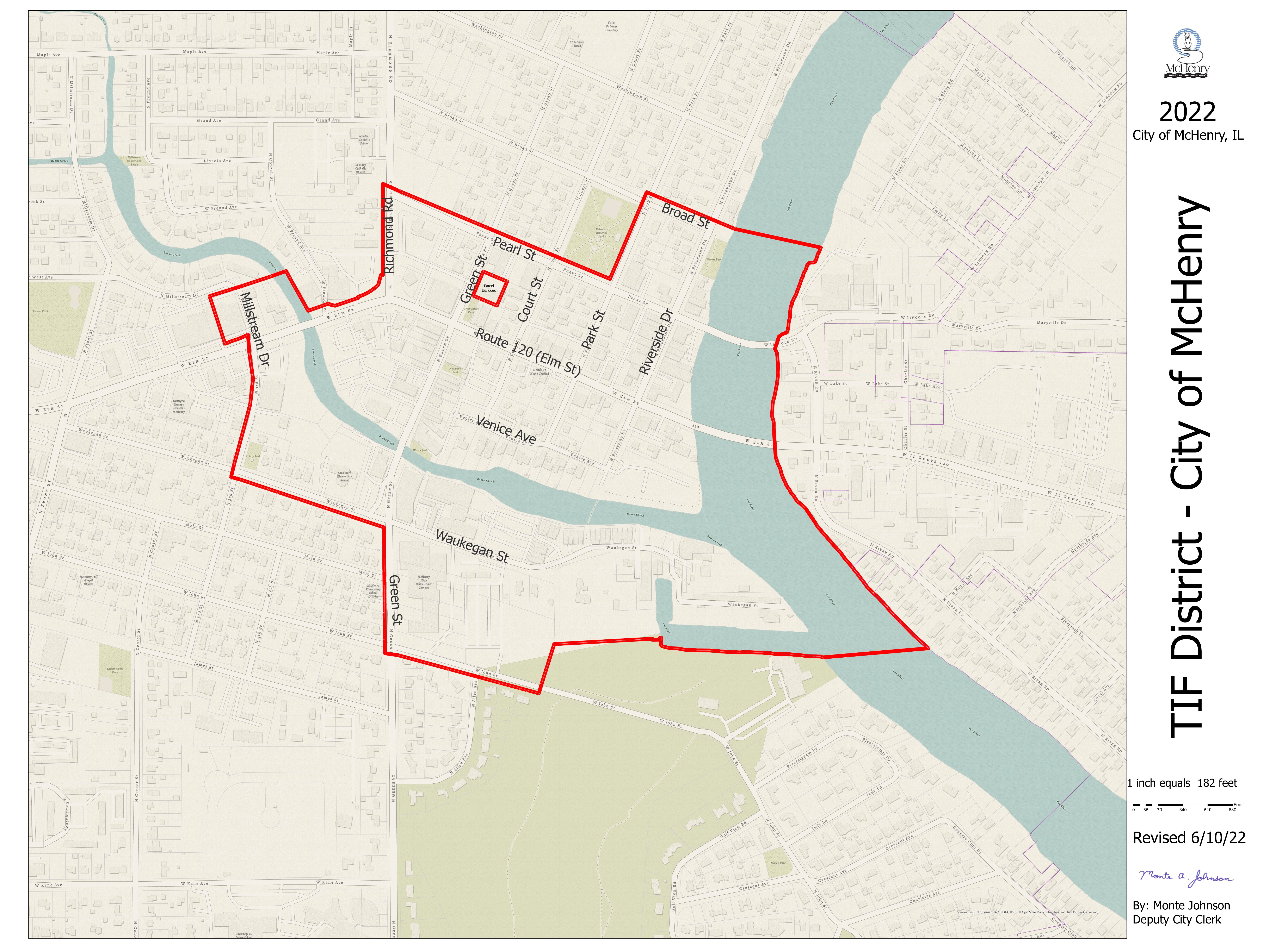TIF District
Tax Increment Financing (TIF) District. TIF districts are aimed at eliminating blight, rehabilitating declining property values, and promoting industry. Some typical activities include:
- Acquisition and demolition of blighted properties in a downtown, construction of parking facilities and street improvements to implement a downtown redevelopment program.
- Extension of sewer, storm sewer, and water mains, construction of a new well or elevated water storage facility to serve new industries.
Waterway and public park improvements. - Benefits from a TIF program may come in the form of increased employment, an improved business climate and elimination of unsafe or unsightly areas.
How does a TIF work?
When a Tax Incremental Financing District (TIF) is created, the aggregate equalized value of taxable and certain city-owned property is established. This is called the Tax Incremental Base. All taxing entities receive their share of the annual taxes generated by the “Base” throughout the life of the TIF.
The city then installs public improvements, development occurs and property values grow. Taxes paid on the increased value (growth) are called Tax Increments and are used to pay for public improvement projects undertaken by the city.
The county, school districts, and other taxing jurisdictions do not benefit from taxes collected on value increases in the district until project costs have been recovered. After that, the TIF is closed and the added value is included in the apportionment process and shared by all taxing jurisdictions.
TIF does not affect an individual property owner’s tax bill; it does not constitute a tax increase or decrease. Tax revenue is merely distributed differently with the incremental portion being deposited to the special fund. The municipality is able to borrow against the incremental revenue flow by issuing bonds or paying for redevelopment costs from other sources of funds.


